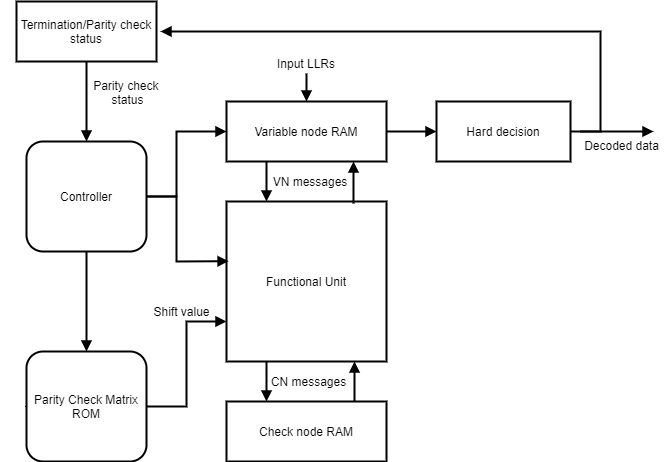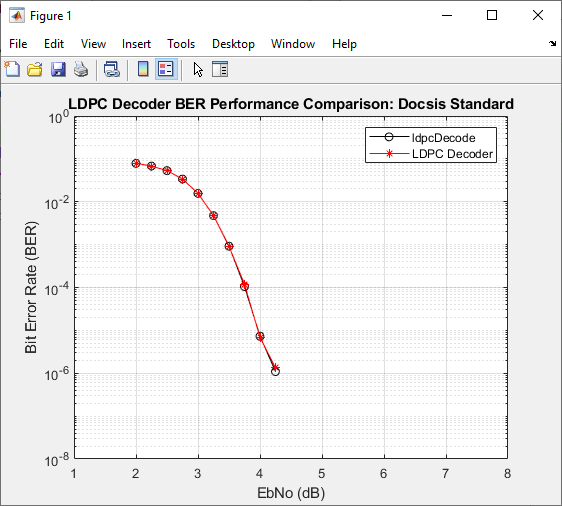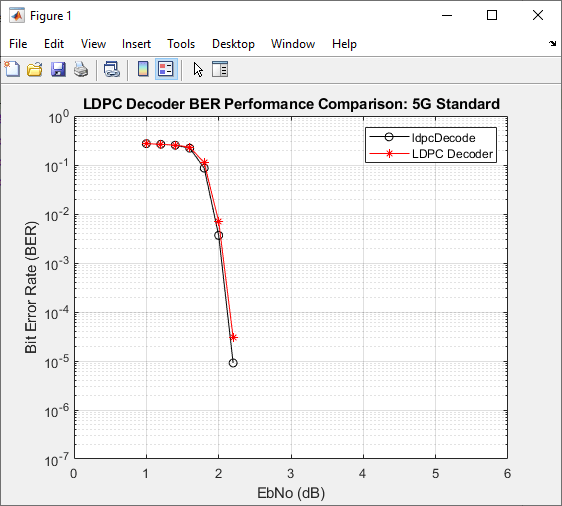LDPC Decoder
Libraries:
Wireless HDL Toolbox /
Error Detection and Correction
Description
The LDPC Decoder block implements a quasi-cyclic low-density parity-check (QC-LDPC) decoder with hardware-friendly control signals. The block accepts log-likelihood ratio (LLR) values and a stream of control signals and outputs decoded bits, a stream of control signals, and a signal that indicates whether the block is ready to accept new inputs.
This block provides an option to implement layered belief propagation with either the normalized min-sum approximation algorithm or the min-sum approximation algorithm. The LDPC Decoder block supports scalar and N-element column vector inputs with a specified parity-check matrix and block size. The block supports the early termination feature to help improve decoding performance and faster convergence speeds at high signal noise ratio (SNR) conditions. The block supports QC-LDPC codes of circulant weight 1.
The block enables decoding of multiple code rates to help achieve high throughput efficiency with a high degree of code rate flexibility. You can use this block to develop a standard-based or generalized receiver that uses a QC-LDPC for forward error correction (FEC) coding. The block provides an architecture suitable for HDL code generation and hardware deployment. For more information, see Algorithms.
Examples
Ports
Input
Output
Parameters
More About
Algorithms
References
[1] Gallager, R. “Low-Density Parity-Check Codes.” IEEE Transactions on Information Theory 8, no. 1 (January 1962): 21–28. https://doi.org/10.1109/TIT.1962.1057683.
[2] Hocevar, D.E. “A Reduced Complexity Decoder Architecture via Layered Decoding of LDPC Codes.” In IEEE Workshop On Signal Processing Systems, 2004. SIPS 2004, 107–12. Austin, Texas, USA: IEEE, 2004. https://doi.org/10.1109/SIPS.2004.1363033.
[3] Chen, Jinghu, R.M. Tanner, C. Jones, and Yan Li. "Improved Min-Sum Decoding Algorithms for Irregular LDPC Codes." In Proceedings. International Symposium on Information Theory, 2005. ISIT 2005. https://doi: 10.1109/ISIT.2005.1523374.
Extended Capabilities
Version History
Introduced in R2023b






